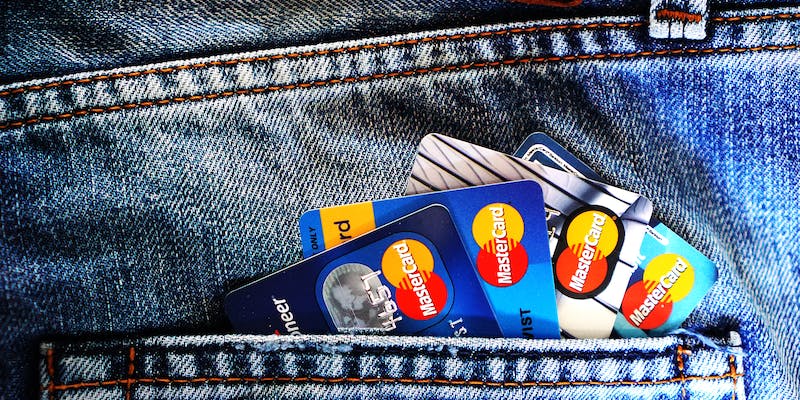In an era where digital transactions are the norm, credit card fraud has become a concerning issue. To tackle this challenge, major credit card issuers have implemented sustained fraud detection policies. In this article, we'll break down the credit card fraud detection strategies of some leading issuers, empowering you with the knowledge to protect your hard-earned money.
What Is Credit Card Fraud?
Credit card fraud refers to unauthorized or deceptive activities involving the use of someone else's credit card or credit card information for financial gain. This type of fraud can take various forms, and perpetrators may employ different tactics to exploit individuals' or organizations' credit accounts. Here are some common forms of credit card fraud:
Stolen Cards: Criminals may physically steal credit cards from wallets, purses, or mail to make unauthorized purchases.
Lost Cards: If a credit card is lost and falls into the wrong hands, it can be used for fraudulent transactions until the cardholder reports it missing.
Skimming: Skimming devices are installed on ATMs, gas pumps, or other point-of-sale terminals to capture credit card information when the card is swiped or inserted.
Phishing: Fraudsters may use deceptive emails, messages, or websites to trick individuals into providing their credit card information.
Data Breaches: Cybercriminals may target businesses or financial institutions to gain access to a large number of credit card details through data breaches.
What is Credit Card Fraud Detection?

Credit card fraud detection refers to the process of identifying and preventing unauthorized or fraudulent activities related to credit card transactions. The primary goal is to detect any suspicious behavior or patterns that may indicate fraudulent use of a credit card and to take appropriate actions to mitigate the risks. Credit card issuers, financial institutions, and payment processors employ various methods and technologies for effective fraud detection. Here's an overview of key aspects of credit card fraud detection:
Real-Time Monitoring:
Fraud detection systems continuously monitor credit card transactions in real time. This immediate monitoring allows for quick identification of unusual activities, such as large transactions, multiple transactions in a short time, or transactions in unfamiliar locations.
Pattern Recognition:
Advanced algorithms analyze historical transaction data to establish patterns of normal cardholder behavior. Deviations from these patterns, such as irregular spending or transactions outside the cardholder's typical geographic locations, trigger alerts for further investigation.
Machine Learning and Artificial Intelligence:
Machine learning and AI play a crucial role in fraud detection. These technologies can adapt and improve over time by learning from new data and evolving fraud patterns. They can identify subtle anomalies that might go unnoticed by traditional rule-based systems.
Behavioral Analytics:
Behavioral analytics assess user behavior, looking for any changes or inconsistencies. For example, if a cardholder suddenly makes purchases in categories they have never used before, it may raise a red flag for potential fraud.
What are the Credit Card Fraud Detection Policies of Major Issuers?
Let’s discuss some of them.
- Visa
Visa, one of the world's largest payment networks, employs advanced algorithms and machine learning to monitor transactions in real time. Their fraud detection system analyzes spending patterns, looking for any anomalies that might indicate fraudulent activity. If something seems off, Visa may prompt you to verify the transaction's legitimacy through a text message or a quick call.
- Mastercard
Mastercard, another giant in the credit card industry, focuses on global collaboration to combat fraud. Their detection system tracks transactions across borders, identifying irregularities and potential threats. Additionally, Mastercard provides a zero-liability policy, ensuring you won't be held responsible for unauthorized transactions if reported promptly.
- American Express
American Express takes a personalized approach to fraud detection. By leveraging advanced analytics, they create individual spending profiles for card members. Any deviation from your usual spending behavior triggers alerts, prompting American Express to investigate and take necessary actions to secure your account.
- Discover
Discover's fraud detection system is a vigilant guardian of your account. They keep a close eye on various factors, including unusual spending patterns, sudden large transactions, and even changes to your account information. If any red flags are raised, Discover promptly notifies you and investigates the matter.
- Chase
Chase Bank employs cutting-edge technology to safeguard your credit card transactions. Their system analyzes numerous data points in real time, including location, merchant, and transaction history. This comprehensive approach helps identify and prevent fraudulent activities before they can cause financial harm.
What are the Advancements in Credit Card Security?

Over the years, advancements in credit card security have been crucial in combating the ever-evolving threats posed by fraudsters. Here are some notable advancements that have enhanced credit card security:
EMV Chip Technology:
The introduction of EMV (Europay, Mastercard, and Visa) chip technology has significantly improved credit card security. Unlike traditional magnetic stripe cards, EMV cards store data on a microchip, making it more challenging for criminals to clone or counterfeit cards.
Tokenization:
Tokenization replaces sensitive card information with a unique token, reducing the risk of exposing actual credit card details during transactions. This technology adds an extra layer of security for online and mobile payments.
Biometric Authentication:
Some credit cards now incorporate biometric authentication methods, such as fingerprint or facial recognition, adding a personalized and highly secure layer to the transaction process.
Real-Time Fraud Detection:
Credit card issuers utilize advanced algorithms and machine learning to monitor transactions in real time. Unusual spending patterns, geographic anomalies, or suspicious activities trigger immediate alerts, allowing for a swift response to potential fraud.
Two-Factor Authentication (2FA):
Two-factor authentication requires users to provide two forms of identification before completing a transaction. This could include a combination of something the user knows (like a password) and something the user has (like a mobile device for receiving authentication codes).
Conclusion
Credit card fraud is an ever-present threat, but major issuers are at the forefront of the battle against it. By understanding the fraud detection policies of companies like Visa, Mastercard, American Express, Discover, and Chase, you can feel more secure in your financial transactions.
Remember to stay vigilant, monitor your statements regularly, and promptly report any suspicious activity to your credit card issuer. With these proactive measures and the sustained fraud detection systems in place, you can enjoy the convenience of digital transactions without compromising your financial security.



